zandpoortvest 10
be 2800 mechelen
t +32 15 336 336
m (b) +32 478 811 441
m (d) +32 475 477 478
ANDREAS FOGARASI
25/1 - 22/2/2009: Andreas Fogarasit curated the exhibition Figure/Ground at Transit Gallery with Anna Artaker/Meike Schmidt-Gleim, Werner Feiersinger, Andreas Fogarasi, Christian Mayer, Sasha Pirker, Fiona Rukschcio
Bart Geerts wrote about this exhibition in his blog on BONEFAST, 03-02-2009, read it here
Review in ARTFORUM 03.02.2009, read it here or in the archives of AF
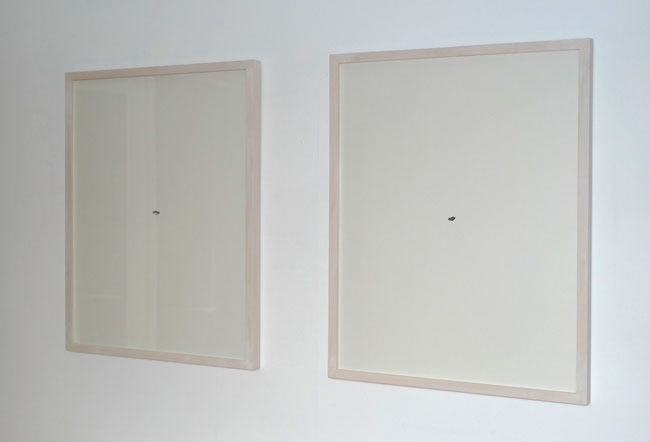

Antwerps Sights (Architecture) | Gerechtsgebouw (R. Rogers 1998-2006) & Antwerps Sportpaleis (1932) in 'Figure/Ground', Transit Mechelen, 2009
Andreas Fogarasi’s works investigate how cultural entities and phenomena can become an image, a brand, and thus marketable identities. In spatial interventions, objects, typographic research, and architectural analysis, he explores the roots and development of communication design, a powerful factor in today’s capitalist economy and politics, as well as the strategies related to various cultural concepts, industrial and economic expectations, and political ideologies and models of representation.
“How can architecture contribute to the representation of political concepts? What could ‘leftist architecture’ be?” These are the questions Fogarasi poses with his work "Displaying a Left" (2001), being shown at Trafó Gallery. Built by Oscar Niemeyer in the 1970s, the Paris communist party headquarters served as a basis for his research. Due to the retro boom of the last few years, the attempt by the French parliamentary left at creating a unique architectural symbol met the common fate of recontextualization. Nevertheless, reaching out for the codes of youth culture seems to have opened up new ways for the Left to strengthen its identity. Authentic 1970s sci-fi elegance and an accompanying leftist aura form a pervasive message that can be read equally well by the diverse audiences of corporate design, fashion, and raves. In addition to presenting these strategies and aesthetics, the work reveals another layer of meaning connected to the present situation by including an article that comments on the actual position, power, and chances of the communist party in France.
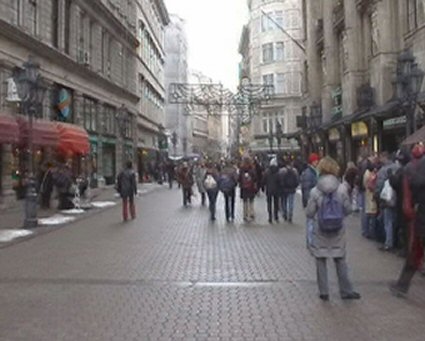
Váci utca (continued), 2001,video/DVD, 3'10
2008 - Andreas Fogarasi: Információ, May 17 - June 29, 2008
Ernst Museum Budapest is pleased to present a solo show of Andreas Fogarasi.
In 2007, the Hungarian Pavilion of the 52nd Venice Biennial won the Golden Lion Award for Andreas Fogarasi’s project entitled Kultur und Freizeit (Culture and Leisure). The project, curated by Katalin Timár, deals with a phenomenon that currently affects all of Europe: the present situation of cultural centres, which have provided an ever-changing setting for popular culture, and which were once formed along the lines of specific culture-political decisions and ideas. More than anything, the six films – which have not been shot with an expressly documentary approach – raise questions about the current condition of the clubs, cultural centres and community establishments with their colourful past, on the one hand, and regarding their “new” identity and status as well as the possibilities for their functioning in a changing political, economical and cultural space, on the other.
The slow moving images of the videos projected in the “black boxes”, which function both as mini cinemas and sculptural object, show from an emphatically subjective perspective details of the repeatedly altered and rebuilt spaces and their urban environments as well as the state of community centres which have served – and still serve – as social sites for different small communities, professional exchanges, local cultures and various events.
A number of Fogarasi’s works address the question of cultural identification – including the issue of branding – and the visual changes that manifest in its appearance (Public Brands – The Nine States of Austria, 2003; Westen [aka Osten], 2005). Research on typography, communication design, history of architecture and industrial design have always comprised an organic part of his projects. The complex examination of a chosen structure (in architecture/design/history of culture) and its system of symbols usually become the subject of interpretation through the design of the space and the objects of
the installation.
The solo exhibition, entitled "Információ", presents for the first time in Hungary an extensive overview of the artist's work from the past 7-8 years, alongside the "Kultur und Freizeit" project.
Andreas Fogarasi studied architecture at the University of Applied Arts in Vienna. Between 1997 and 1999 he was a collaborative organiser and student of the Freie Klasse (Free Class). He completed his studies in 2003 at the Academy of Fine Arts in Vienna. Since 2001, he has been co-editor of dérive – Magazine for Urban Studies. http://www.derive.at
Parc du Trianon, 2002
2007 - Kultur und Freizeit (Culture and Leisure)
From June to November 2007 the Hungarian Pavilion of the 52nd Venice Biennale
showcases Andreas Fogarasi’s project Kultur
und Freizeit (Culture and
Leisure) curated by Katalin Timar. The project focuses on cultural peripheries
and the separation of the locations of popular culture, a phenomenon affecting
and concerning nowadays all Europe.
Andreas Fogarasi (b. 1977), who has already successfully introduced himself
in many of the world’s leading international exhibitions and art sites
(Manifesta Frankfurt am Main, Palais de Tokyo Paris, Kunstverein Graz, etc),
will show his single-channel video series about the present of cultural centres
in Budapest in separate black boxes designed exclusively for the Hungarian
Pavilion of the Venice Biennale.
Entering these micro-cinemas on the shorter side of the black boxes halved
and somewhat diverging viewers take place on the benches and watch 6 videofilms
about cultural centres in Budapest, 4 to 12 minutes long each. Rather than
being straightforward documentaries these short films focus on the global
phenomenon of the survival and isolation of clubs, cultural centres and public
spaces on the peripheries of high-culture instead. Fogarasi’s images,
slow-motion, emphatically impersonal, loitering on architectural details
once considered to be so choice, research the situation of these cultural
sites which have slowly become the islands of subcultures, alternative satellite
cultures recently. Through their history and role these cultural centres,
locations of the democratization of culture centrally controlled and supervised
in Hungary would connect to the past political system of the country, internationally
though they date back to the 19th century conception of workers’ educational
societies. In the shadow of downtown commercial and cultural plazas they
have been pressed on the social and cultural peripheries these days.
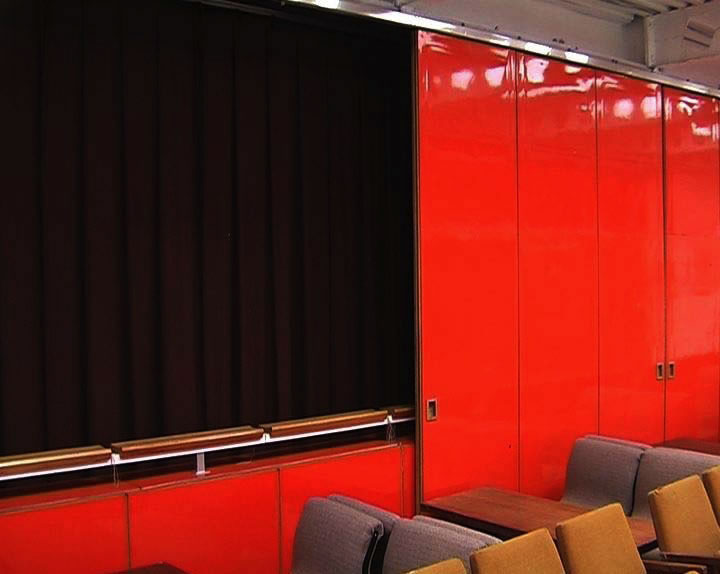
A Machine for, 2006, Video, 8 min, filmstill
The bilingual catalogue in Hungarian and English which accompanies the exhibition
will, apart from providing an analysis of the work itself highlight its social,
political and economic aspects as well. See e.g. Sergio Bologna’s
contribution on the history of the relationship between work and free time
or Jochen Becker’s on the
change in the situation of cultural centres in the post-communist era. Equally
important is in this respect the question of cultural memory (Péter
György) or the transformations of the concept of
culture (Zsolt K. Horváth). Potential self-organization
in today’s society is a politically and culturally
charged issue (Anthony Davies, Stephan Dillemuth, Jakob Jakobsen). The active
role the viewer plays in reception has become a focal point of interest for
art theory lately (Barbara Steiner).
Some of Andreas Fogarasi’s videos about cultural centres in Budapest
have already been presented on exhibitions in Budapest, Vienna and Cologne,
see the press clippings below:
“His art is a continuous investigation into existing relations. His
creations are not fantasies but analysis: that of architecture and the social,
political, cultural and economic problems related to it. (…)
Imprints of past and present,
melting in Fogarasi’s work into a didactic,
still poetic documentation.” (Die Presse)
“The audience’s experience of Kultur und Freizeit is very precisely
dictated: projecting out from the gallery wall is a large, black cube housing
a bench and a wooden viewing funnel; once seated inside this peepshow-like
milieu, the viewer’s
position and gaze are fixed. This elegant construction feels like a scaled-down
version of the many theatrical arenas featured in Fogarasi’s
film.” (Frieze)
Special news: VENICE, ITALY.-The Hungarian Pavilion has won the Golden Lion for Best National Participation of the 52nd International Art Exhibition of La Biennale di Venezia.
For the first time in the history of the Venice Biennale, the Golden Lion for the best national participation was awarded to the Hungarian Pavilion, which this year featured Andreas Fogarasi’s project Kultur und Freizeit (Culture and Leisure), curated by Katalin Timár.
“The Golden Lion for an outstanding national participation is being given to a pavilion where architecture and cultural history are deployed to generate intelligent and poetic relations between content, visual language and structural display. The Jury also considers important the artist’s aproach to modernity, its utopias and failures in the context of the shared history.”

Kultur und Freizeit, 2007, exhibition view
Hungarian Pavilion Giardini di Castello, 52nd International Art Exhibition La Biennale di Venezia, Photo: Tihanyi-Bakos Fotóstúdió
1999' Bunte Laune' exhibition in Transit:
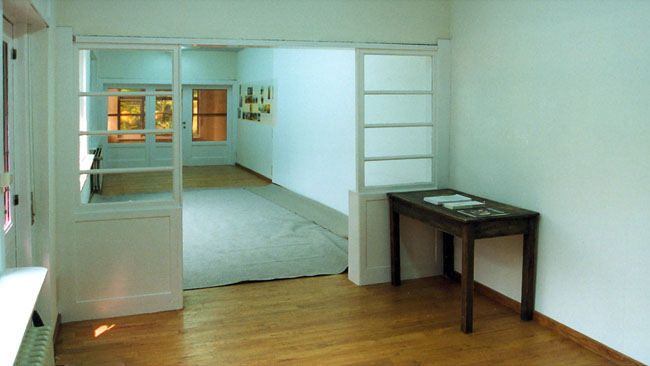
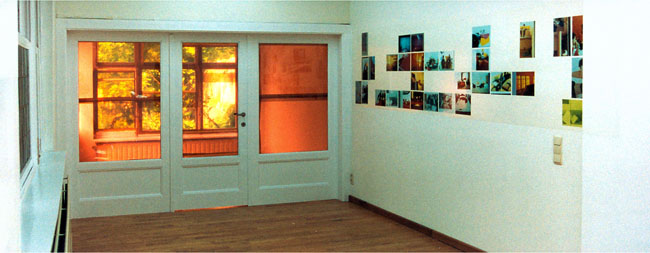
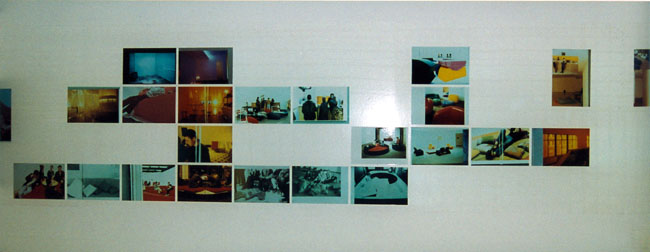
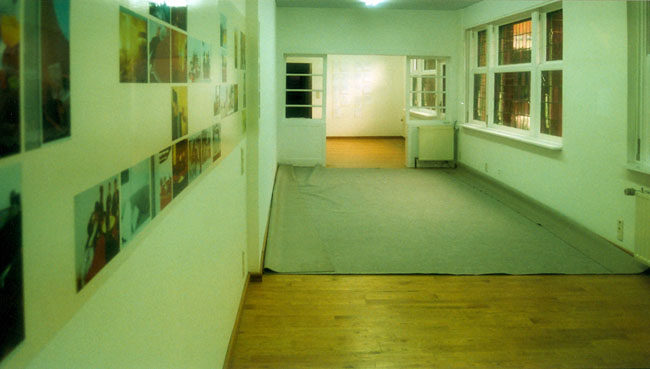
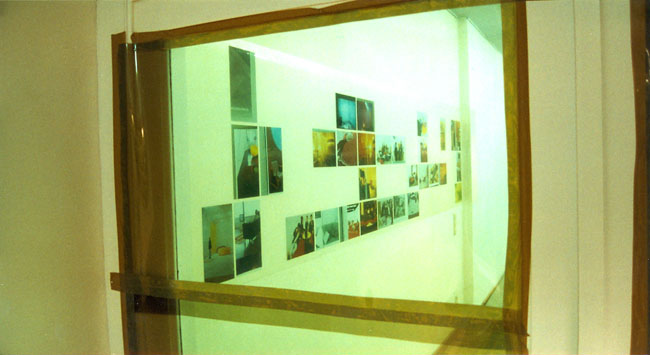
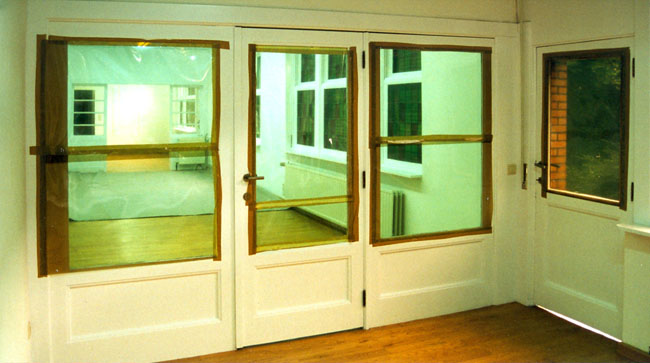
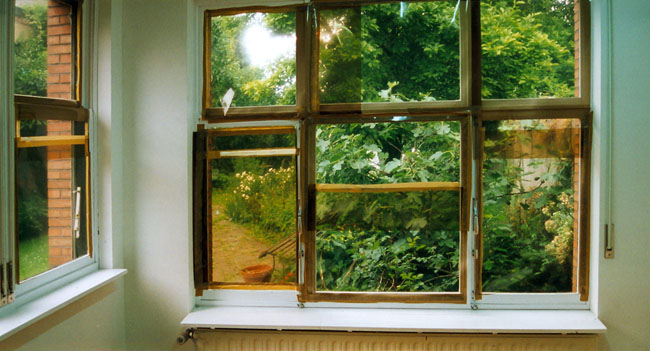
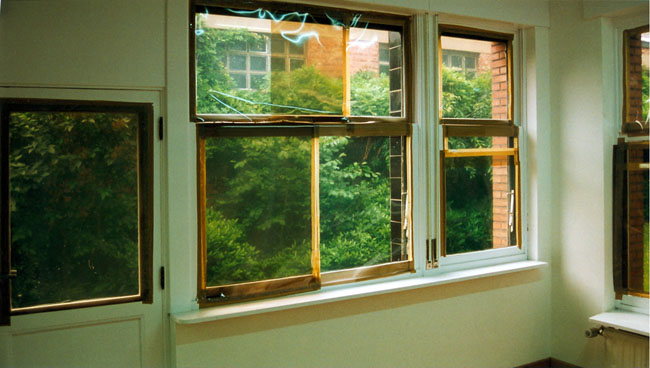

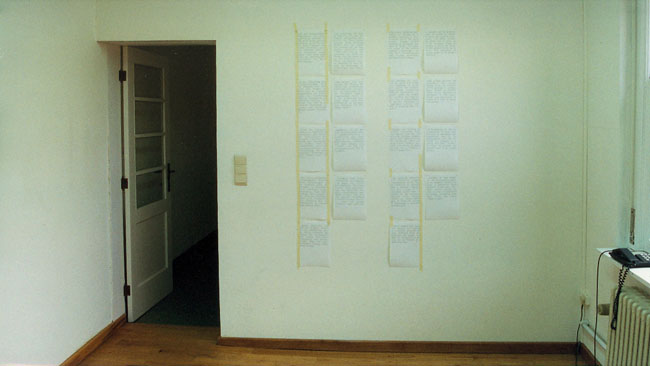


Biography
Geboren 1977 in Wien, lebt in Wien
Born 1977 in Vienna, lives in Vienna
Ausbildung
Education
1995-99 Architekturstudium, Hochschule für angewandte Kunst, Wien / Studies of architecture, University of Applied Arts, Vienna
1997-99 Freie Klasse, Vienna
1999-03 Akademie der bildenden Künste, Wien / Academy of Fine Arts, Vienna
2002-03 Le pavillon, Palais de Tokyo, Paris
Einzelausstellungen
Solo Exhibitions
2008 "Fairview", Lombard-Freid Projects, New York
"Support Surface", Galerie Cortex Athletico, Bordeaux
"2008", MAK, Wien
"Információ", Ernst Museum, Budapest
"Kultur und Freizeit", Grazer Kunstverein, Graz
2007 "Kultur und Freizeit", Hungarian Pavillon, 52. Biennale di Venezia
2006 "Norden", Georg Kargl Box, Vienna
2005 "Westen (aka Osten"), Grazer Kunstverein, Graz
"Süden", Porschehof/Salzburger Kunstverein, Salzburg
2004 "A ist der Name für ein Modell / Étrangement proche", Liget Galéria, Budapest
2003 "ABCity (The Player)", Trafó, Budapest (curator)
"Welcome to Regions", Display Gallery, Prague
"A ist der Name für ein Modell / Étrangement proche", Offspace, Vienna
2002 "Kultúrapark", Stúdió Galéria, Budapest
"Culture Park", Galerie 5020, Salzburg
1999 "Modell Ambient (Bunte Laune)", Transit VZW, Mechelen
Gruppenausstellungen (Auswahl)
Group Exhibitions (selection)
2009
A Pair of Left Shoes (Index of post-communist condition), Kunstmuseum Bochum
Curated by Tihomir Milovac.
Artists: Jaan Toomik, Deimantas Narkevi?ius, Miroslaw Ba?ka, Via Lewandowsky, Roman Ondak, Andreas Fogarasi, Dunja Zupan?i? / Dragan Živadinov, IRWIN, Nedko Solakov, Pavel Braila, Šejla Kameri?, Mladen Stilinovi?, Dalibor Martinis, Andreja Kulun?i?, Sanja Ivekovi?, Zlatko Kopljar, David Maljkovi?
Fifty Fifty, Kunst im Dialog mit den 50-er Jahren, Wien Museum Karlsplatz, Vienna
Curated by Wolgang Kos and Gudrun Ratzinger
Artists: Marc Adrian, Monica Bonvicini, Oliver Croy/Oliver Elser, Igor Eškinja, Werner Feiersinger, Andreas Fogarasi, Isa Genzgen, Lukasz Gorczyca, Szymon Kobylarz, Jakob Kolding, Pia Lanzinger, Dorit Margreiter, Christian Philipp Müller, Roman Ondák, Gerwald Rockenschaub, Hans Schabus, Margherita Spiluttini, Lorenz Straßl, Gerold Tagwerker, Sofie Thorsen, Adrien Tirtiaux, Heimo Zobernig
EV+A 2009, Reading the City, LImerick City Gallery of Art, Limerick (Ireland)
Curated by Angelika Nollert and Yilmaz Dziewior.
Artists: Nevin Aladag, Andreas Bunte, Lynda Devenney, Willie Doherty, Andrea Faciu, Andreas Fogarasi, Jan Freuchen, Garvan Gallagher, William Hamilton, Diango Hernandez, Michele Horrigan, Florian Hüttner, Luis Jacob, Daniel Knorr, Jakob Kolding, Nicky Larkin, An Te Liu, Sean Lynch, Eduardo Daniel Navarro, Vukasin Nedeljovic, Seamus Nolan, Isabella Oberländer, Eoin O’Conaill, Siobhan Ogilvy, David O’Kane, Eamon O’Kane, John O’Reilly, Alan Phelan, Marjetica Potr?, Gavin Redmond, Tom Ryan, Jochen Schmith, Donal Sheehan, Nicole Six & Paul Petritsch, Stefanos Tsivopoulos, Olaf Unverzart
El pasado en el presente y lo propio en lo ajeno (The past in the present and the near in the far), LABoral Centro de Arte y Creación Industrial, Gijón (Spain)
Curated by Juan Antonio Álvarez Reyes
Artists: Fernando Bryce, Maite Centol, Colectivo Escoitar.org+Enrique Tomás, Jeremy Deller, Escoitar, Fiumfoto, Andreas Fogarasi, Marta de Gonzalo y Publio Pérez Prieto, Susan Hiller, Benjamín Menéndez, Tomás Miñambres, Deimantas Narkevi?ius, Susan Philipsz, Juan José Pulgar, Martha Rosler, Ángel de la Rubia, Avelino Sala, Hito Steyerl, Lucinda Torre, Jasmila Žbani?
2008
"Moirés", Kunstraum der Universität Lüneburg
"In Between, Austria Contemporary“ Genia Schreiber University Art Gallery, Tel Aviv
"Modern Ruin", Queensland Art Gallery / Gallery of Modern Art, Brisbane
"6th International Biennale", Gyumri (Armenia)
"Art Unlimited", Art 39 Basel
"Islands+Ghettos", Heidelberger Kunstverein
"Scene Missing", Georg Kargl Fine Arts, Vienna
"Scene Missing", Galerie Thomas Schulte, Berlin
"Phantasies of the Beginning", Billboard Gallery, Bratislava
"Undiszipliniert", Kunsthalle Exnergasse, Vienna
"Am Puls der Stadt – 2000 Jahre Karlsplatz", Wien Museum Karlsplatz, Vienna
2007 "Cine y casi cine", Centro de Arte Reina Sofia, Madrid
'Kapitaler Glanz', Kunstverein für die Rheinlande und Westfalen, Düsseldorf, Andreas Fogarasi, Bernhard Kahrmann, David Maljkovic, Pernille Kapper Williams
"Models for Tomorrow: Cologne", European Kunsthalle, Cologne
2006 "This Land is my Land", NGBK, Berlin
"Center", MAK Center, Los Angeles
"wood, photographs, aluminium plate, LED, table, book, silkscreen, personal computer, monitor, web connection,
nivea cream, video, paper, graphite, pencil, acrylic", Galerie Jocelyn Wolff, Paris
"How to do Things?", Kunstraum Kreuzberg / Bethanien, Berlin
"This Land is my Land", Kunsthalle Nürnberg
"Der Raum zwischen zwei Bildern", Fotohof, Salzburg
"Geschichte(n) vor Ort", Volkertviertel, Vienna
"How to do Things?", Trafó, Budapest
2005 "Re:Modern", Künstlerhaus, Vienna
"Brutal Ornamental", Galerie Kosak Hall, Vienna
"Reading in Absence", Trafó, Budapest
"Utopie : Freiheit, Kunsthalle Exnergasse, Vienna
"Alice Creischer/Andreas Siekmann, Andreas Fogarasi, Dorit Margreiter", Kunstraum Lakeside, Klagenfurt (permanent)
"Storyboards – Trapped in the escape", Vector Gallery, Iasi
"citysellingcitytelling", Sparwasser HQ, Berlin
2004 "Images of Violence/Violence of Images", Biennale of Young Artists, Bucharest
"Living Room", Kunsthalle Exnergasse, Vienna
"Wiener Linien", Wien Museum Karlsplatz, Vienna
"Video as Urban Condition", Austrian Cultural Forum, London
"Formate – (re-)constructing the city", Galeria Noua, Bucharest
2003 "Gegeben sind... Konstruktion und Situation", Galerie im Taxispalais, Innsbruck
"Balkan Konsulat proudly presents: Budapest", Rotor, Graz
"GNS", Palais de Tokyo, Paris
"Gravitation", Moszkva tér, Budapest
"Grosser Sommer an der Thaya", Drosendorf
2002 "Site-Seeing: Disneyfication of Cities?", Künstlerhaus, Vienna
"Evidence", Essor Gallery Project Space, London
"Manifesta 4", Frankfurter Kunstverein, Frankfurt/Main
"Double Bind", ATA Center for Contemporary Art, Sofia
"Gallery by Night", Stúdió Galéria, Budapest
2001 "Szerviz", Mücsarnok/Kunsthalle, Budapest
"Real presence", Studentski Kulturni Centar, Belgrad
"A table, an office, a building...", Semperdepot, Vienna
"January Show", Passagegalerie Künstlerhaus, Vienna
2000 "block", Apex Art, New York
"99/00", Semperdepot, Vienna
1998 "Clarice Works", Zentnerstrasse 18, München
1997 "Új stúdiósok", Duna Galéria, Budapest
1995 "Odyssee today", University of Athens
"Odyssee today", Depot, Vienna
Texte, Beiträge, Publikationen (Auswahl)
Writings, Contributions, Publications (selection)
Dérive – Magazine for Urban Studies (co-editor since 2001)
71133 – Magazine of the Art Universities (co-editor, 2000-2002)
Test Magazine (co-editor, 1997)
"Kultur und Freizeit", in: Multitudes 30 (2007)
"Kultur und Freizeit", in: springerin Bd. XIII, Heft 1 (2007)
"Visuelle Identität – Orte als Marken?", in: Dérive, Nr. 23 (2006)
"Bei zukünftigen Museumsplanungen Fehler vermeiden", in: Dérive, Nr. 23 (2006)
"Public Brands: Bordeaux", in springerin, Bd. X, Heft 2 (2004)
"Der Essay als Form", in: Dérive, Nr. 15 (2004)
"Public Brands: Secretariat d'etat ...", in: Version Magazine 0.4 (2003)
"So haben wir über das System gelacht", in: springerin, Bd. IX, Heft 3 (2003)
"Public Brands: Wiener Einkaufsstraßen", in: Strassenfeger, Artforum Spezial, Ausgabe 21, (2003)
"Public Brands: The nine states of Austria", in: Journal for Northeastern Issues, Nr. 2 (2003)
"Bratislava-Petrzalka", in: Chicago (2002)
"Argument Kultur", in: Dérive, Nr. 6 (2002)
"'Life codes', Diagramme und Schwarzweisskopien", in: Dérive, Nr. 4 (2001)
"Out of service", in: springerin, Bd. VII, Heft 4 (2001)
"Bahnhofsoffensive gegen soziale Randgruppen (with Beat Weber)", in: Dérive, Nr. 3 (2001)
"Beauty Now", in: 71133#27 (2001)
"16 Bogen und Widerstand", in: 71133#25 (2000)
"Kunst hautnah", in: Test, Nr. 0 (1997)
Bücher, Kataloge (Auswahl)
Books, Catalogues (selection)
"Andreas Fogarasi – Information", Frankfurt/Main (Revolver), 2008
"Andreas Fogarasi – 2008", Wien (Schlebruegge), 2008
"Andreas Fogarasi – Kultur und Freizeit", ed. Katalin Timár, Köln (Verlag der Buchhandlung Walther König), 2007
"Andreas Fogarasi – A ist der Name für ein Modell / Étrangement proche", Frankfurt/Main (Revolver), 2006
"Moirés", ed. Astrid Wege, Lüneburg, 2008
"Islands+Ghettos", ed. Johan Holten, Nürnberg (Verlag für Moderne Kunst), 2008
"Dictionary", ed. Ask, Hillesø, Rasmussen & Rosasco, Istanbul, 2007
"This Land is my Land", ed. NGBK, Kunsthalle Nürnberg, Berlin, 2006
"How to do Things?" ed. Dorothee Bienert, Antje Weitzel, Frankfurt/Main (Revolver), 2006
"Balkan Konsulat", ed. Margarethe Makovec, Anton Lederer, Frankfurt/Main (Revolver), 2006
"The Manifesta Decade", ed. Barbara Vanderlinden, Elena Filipovic, Cambridge (The MIT Press), 2006
"Reading in Absence", ed. Eszter Lázár, Budapest (FKSE), 2005
"Utopie : Freiheit", ed. Verena Schäffer, Vienna, 2005
"Display Book 01/03", ed. Display Gallery Prague, 2004
"Visual Culture", ed. Károly Kokai, Budapest (Ludwig Museum), 2005
"Public Art, Kunst im öffentlichen Raum Niederösterreich Bd. 7", ed. Katharina Blaas-Pratscher, Vienna/New York (Springer), 2004
"Wiener Linien", ed. Wolfgang Kos, Brigitte Huck, Vienna/Bolzano (Folio), 2004
"Formate. Wien ca. 2004", ed. Georg Schöllhammer, Vienna/Bucharest, 2004
"Performative Installation", ed. Angelika Nollert, Gent/Cologne (Snoeck), 2003
"GNS", ed. Nicolas Bourriaud, Paris (Éditions Cercle d'Art), 2003
"Site-Seeing", ed. Sønke Gau, Katharina Schlieben, Berlin (b_books), 2003
"Moszkvatér/Gravitáció", ed. Dóra Hegyi, Budapest (Ludwig Museum), 2003
"Double Bind", ed. Georg Schöllhammer, Iara Boubnova, Vienna/Sofia, 2003
"5020", ed. Galerie 5020, Salzburg, 2003
"Manifesta 4", ed. Iara Boubnova, Nuria Enguita Mayo, Stéphanie Moisdon Trembley, Ostfildern-Ruit (Hatje Cantz), 2002
"Nantes", ed. no_block, Wien, 2001
"Szerviz", ed. Judit Angel, Budapest (Mücsarnok), 2001
Bibliographie (Auswahl)
Bibliography (selection)
Beata Hock, "Andreas Fogarasi", Exit Express, #37, Junio/Septiembre 2008
Nicole Scheyerer, "Kurven, überall Kurven", Die Presse, 10.4.2008
Roland Schöny, "Der Grammatik von Räumen auf der Spur", artmagazine.cc, 29.4.2008
Edit András, "Nachwirkungen", Springerin 3/08
Sønke Gau, "Eine Verschachtelung von Räumen", die bildende 03 (2008)
"3 Fragen an Andreas Fogarasi", Monopol 12/2007
Szemerey Samu, "Interview with Andreas Fogarasi", The Room, Fashion and Art Magazin, 2007/november
Rainer Bellenbaum, "Dispositiv-Wechsel", Camera Austria, 99/2007
Andrea Winklbauer, "Velum mit bunten Flecken", artmagazine.cc, 11.6.2007
Benno Schirrmeister, "Isa Genzgens "Öl für Kunst"-Programm", Die Tageszeitung, 9./10.6.2007
Nina Schedlmayer, "Andreas Fogarasi bespielt den ungarischen Biennale-Pavillon", Kunstzeitung 131/Juli 2007
Nicole Scheyerer, "Andreas Fogarasi", Frieze, April 2007
Iris Meder, "Theorie, fragmentiert", artmagazine.cc, 25.3.2007
Manisha Jothady, "Gescheiterte Biosphäre", Die Presse, 16.11.2006
Mathias Dusini, Nicole Scheyerer, "Gute Idee", Falter 46/06
Christa Benzer, "Lokalaugenschein im Ziel-2-Gebiet", Der Standard, 7.6.2006
Roland Schöny, "Stadträume im Fokus - Andreas Fogarasi", Parnass 1/06
Tijana Stepanovic, "Mind the Gap", exindex.hu, 2005
Eva Kernbauer, "Andreas Fogarasi: Westen (aka Osten)", Springerin 3/05
Andrea Domesle, "Die Sprache des Designs", artmagazine.cc, 11.2.2005
Edit András, "Andorra különösen közel van", Müértö, November 2004
Nicole Scheyerer, "Kunst kurz", Falter 40/04
Cosmin Costinas, "Moving Formats", Idea #18, 2004
Rainer Metzger, "Gelegenheit zu einer kleinen Verzweiflung", artmagazine.cc, 2004
Nicole Scheyerer, "Kunst kurz", Falter 24/03
Szövényi Anikó, "Ökumenikus szörf, Moszkva tér", exindex.hu, 2003
Balázs Beöthy, "Gravitáció", Európai Utas 2/2003
Miklós Erhardt, "Trianon Dérive", Praesens 1/2003
Susanne Jäger, "Site-Seeing", Flash Art, March/April 2003
Marie Röbl, "Site-Seeing", Camera Austria, February/March 2003
Matthias Dusini, "Mickey in den Städten", Falter 51-52/02
Dorothee Frank, "Site-Seeing", kultur.orf.at, 2002
Thomas Wulffen, "Manifesta 4", Kunstforum International 161, 2002
Eva Maria Magel, "Manifesta: Andreas Fogarasi", Frankfurter Allgemeine Zeitung, 16.8.2002
Gislind Nabakowski, "Manifesta 4", Tages Anzeiger, 6.6.2002
Janneke de Vries, "Künstlerportrait Andreas Fogarasi", Frankfurter Rundschau, 15.7.2002
Sønke Gau, "Andreas Fogarasi: Culture Park", Springerin 2/02
Anselm Wagner, "Galerienrundschau", Der Standard, 18.3.2002
Nicole Scheyerer, "Kunst kurz", Falter 3/01
Luk Lambrecht, De Morgen, 7.5.1999
Kristien Philippe, Gazet van Antwerpen, 6.5.1999
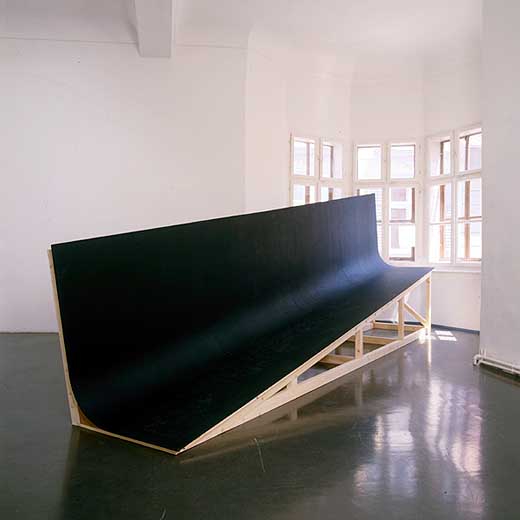
Ramp, 2005, Photo: Susanne Stadler

